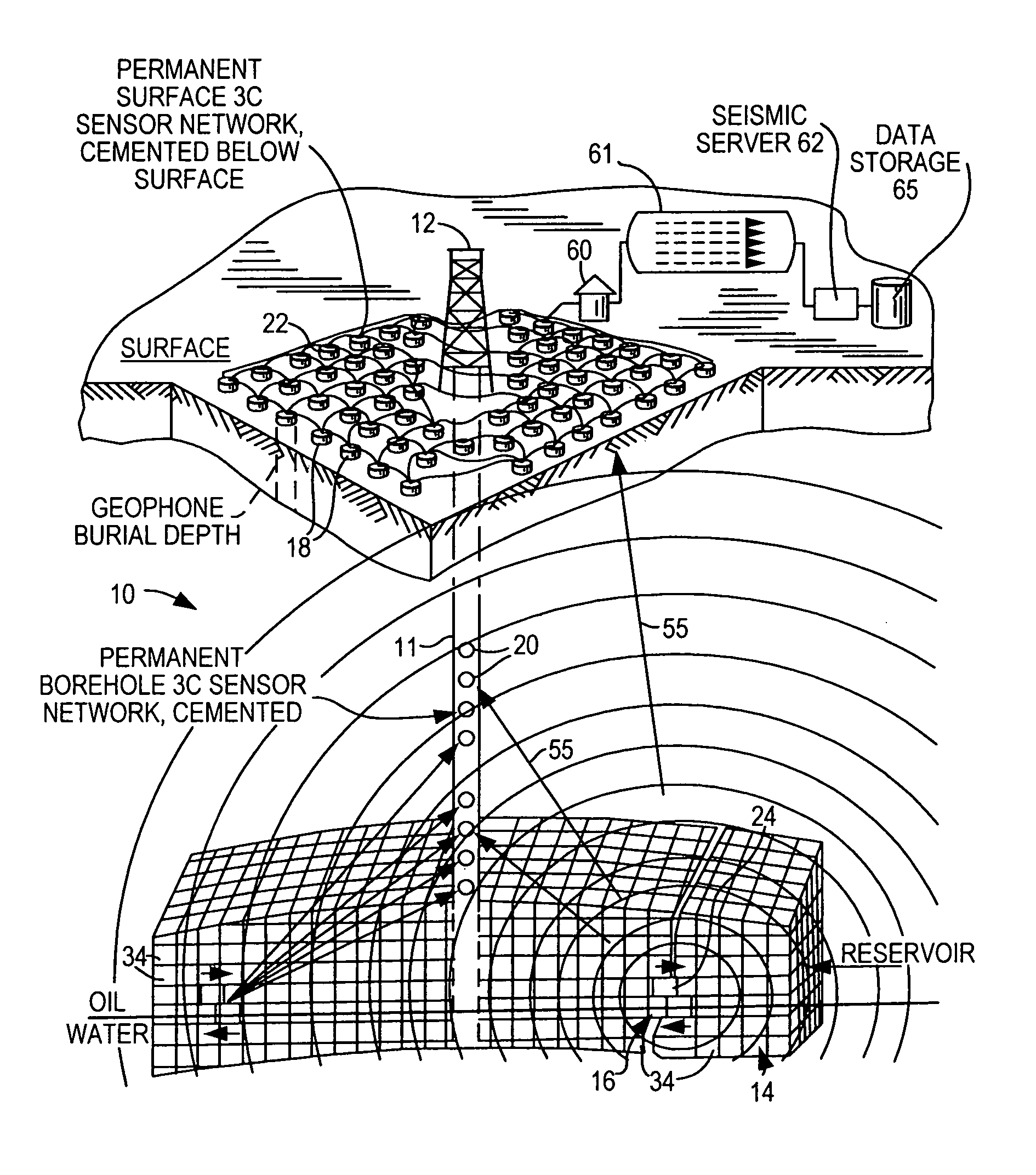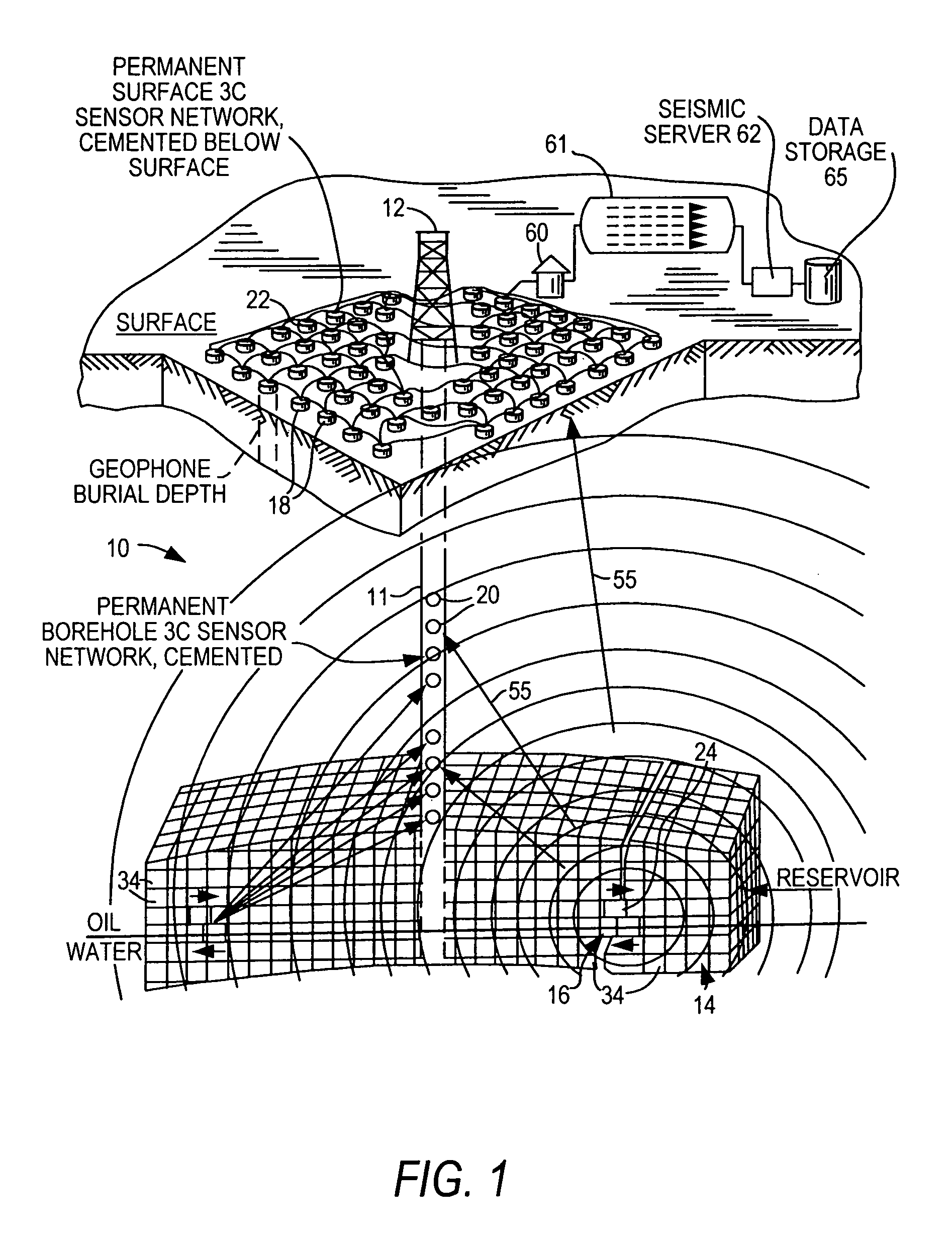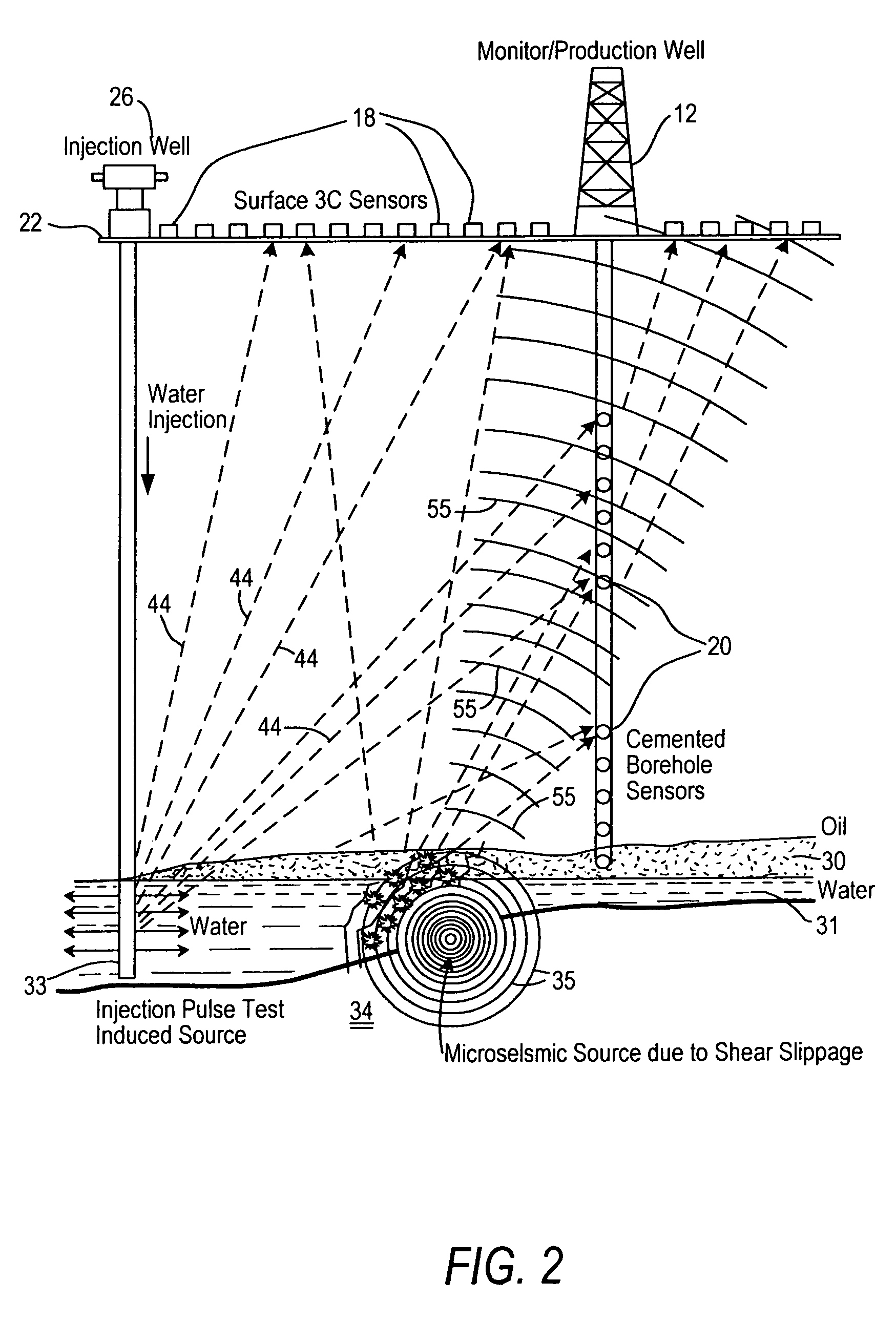Continuous reservoir monitoring for fluid pathways using microseismic data
a technology of fluid path and microseismic data, applied in the field of continuous monitoring of fluid path, can solve the problems of increasing shear stress, affecting the stability along the plane, and affecting the stability in the zone of weakness
- Summary
- Abstract
- Description
- Claims
- Application Information
AI Technical Summary
Benefits of technology
Problems solved by technology
Method used
Image
Examples
Embodiment Construction
[0064]As shown in FIGS. 1-14, the present invention advantageously provides a system and method for continuously detecting passive microseismic events or micro-earthquakes for monitoring fluid pathways in a hydrocarbon reservoir. Anisotropic fluid flow or uneven directional flow rate is commonly associated with reservoir production and injection operations. As fluids are produced from, and injected into the reservoir, microseismic events are generated due to the flow anisotropy.
[0065]FIG. 1 is a schematic representation of a system 10 using the methods described herein for detecting microseisms and for determining their source points that are related to the shear slippage along zones 16 of weakness in reservoir rocks 34 of a reservoir 14. Microseismic signals emanate from the zones 16 as fluid injection and production activities cause perturbations in the reservoir 14. According to this invention, 3-component seismic sensors 18, 20 are deployed below the surface 22 and in a well bor...
PUM
 Login to View More
Login to View More Abstract
Description
Claims
Application Information
 Login to View More
Login to View More - R&D
- Intellectual Property
- Life Sciences
- Materials
- Tech Scout
- Unparalleled Data Quality
- Higher Quality Content
- 60% Fewer Hallucinations
Browse by: Latest US Patents, China's latest patents, Technical Efficacy Thesaurus, Application Domain, Technology Topic, Popular Technical Reports.
© 2025 PatSnap. All rights reserved.Legal|Privacy policy|Modern Slavery Act Transparency Statement|Sitemap|About US| Contact US: help@patsnap.com



